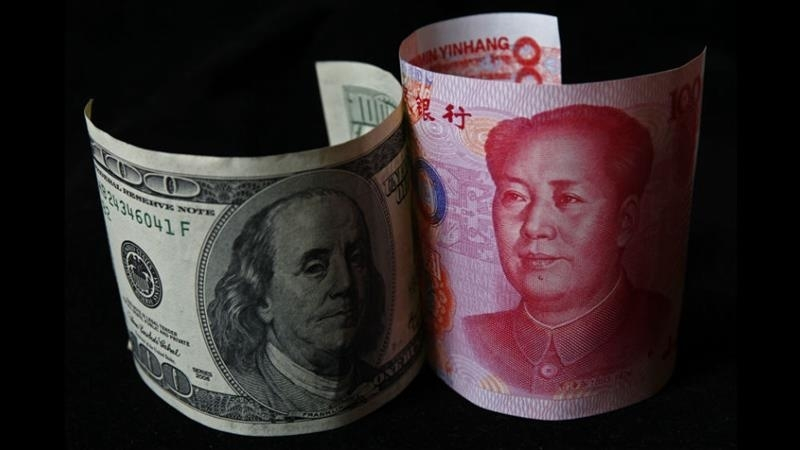

Wall Street’s main indexes fell sharply on Monday, with the Dow Jones Industrial Average tumbling more than 500 points, as China’s willingness to let the yuan slide in response to the latest U.S. tariff threat fanned fears that it could further aggravate an ongoing trade war.
The yuan breached the key 7-per-dollar level for the first time in more than a decade, and President Donald Trump slammed it as “a major violation”, sending investors scurrying for the safety of assets such as government bonds, gold and the Japanese yen. Last week Trump stunned financial markets by threatening to impose 10% tariffs on the remaining $300 billion of Chinese imports, abruptly abandoning a brief ceasefire.
“The currency move is part of the trade war,” said Andre Bakhos, managing director at New Vines Capital LLC in Bernardsville, New Jersey.
“It is a bold statement to the U.S. that says if you want to play, we could play a different way as well. It takes any optimism out of the market that there will be a quick resolution to trade (war).”
On Friday, the benchmark S&P 500. SPX and the Nasdaq. IXIC suffered their worst weekly performance of 2019, in a week that also saw the U.S. Federal Reserve cut interest rates for the first time in a decade.
The CBOE Volatility index. VIX, a gauge of investor anxiety, rose to its highest level in about three months at 21.36 points. U.S. Treasury yields tumbled, with the 10-year yields hitting their lowest level since November 2016.
The difference between the three-month Treasury bill rate US3MT=RR and 10-year yields US10YT=RR grew to the widest since April 2007. This curve “inversion” between the two maturities has preceded every U.S. recession in the past 50 years. [US/]
Declining issues outnumbered advancers for a 7.17-to-1 ratio on the NYSE and for a 7.42-to-1 ratio on the Nasdaq. The S&P index recorded three new 52-week highs and 26 new lows, while the Nasdaq recorded nine new highs and 215 new lows.

Copyright © 2018 CGTN. Beijing ICP prepared NO.16065310-3
Copyright © 2018 CGTN. Beijing ICP prepared NO.16065310-3